News and Announcements
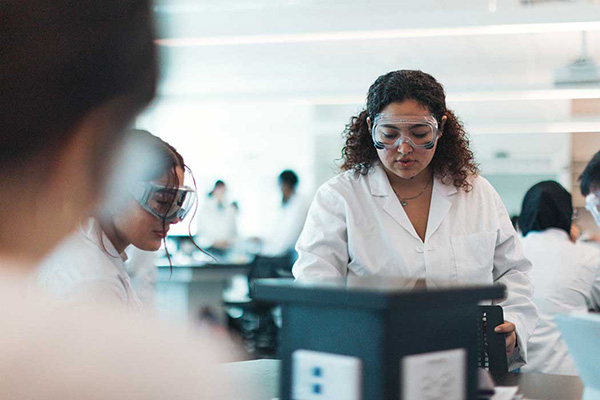
SF State held a dedication ceremony on Jan. 24 for its new Science and Engineering Innovation Center (SEIC), an all-electric science building filled with innovative student-centric teaching spaces. Located prominently on 19th Avenue, the building was constructed with the future in mind, specifically designed to prepare students for various STEM workforces while emphasizing student academic support and sustainability.
“In some ways more important from the local perspective, 80% of our science and engineering alumni live in the Bay Area, 83% stay in California and 8% of the employees in the largest Bay Area biopharma companies are [from] San Francisco State. This new center will grow the already significant number of alumni working in the Bay Area STEM industries by preparing our graduates to better compete in these fields. An investment in San Francisco State is an investment in the health and future of California,” said San Francisco State University President Lynn Mahoney during the ceremony.
At the ceremony, San Francisco Board of Supervisors President Rafael Mandelman, District 19 Assemblymember Catherine Stefani and CEO of Gilead Daniel O’Day shared SF State’s role in the biotech and engineering pipelines and how SEIC will prepare SFSU’s diverse students for the industry workforce.
The ceremony marked the completion of the new 125,000-square-foot SEIC building and renovation of the existing adjacent Science Building. SEIC is home to the College of Science & Engineering’s (CoSE) Department of Chemistry & Biochemistry and School of Engineering, as well as the CoSE dean’s office and the College of Professional & Global Education campus operations on the fifth floor.
The college anticipates SEIC will serve all 7,000 CoSE students and thousands of general education students each year. The building is also open to the University community for seminars, workshops, student activities and more. CoSE Dean Carmen Domingo hopes that the building will be an inclusive space where students can see themselves as future engineers, chemists and scientists. By “putting science on display,” SEIC can help demystify what it means to be a scientist — and who can be in these fields.
“The SEIC is more than a science building; it’s an inclusive space for students to explore, innovate and learn with cutting-edge technology and talented faculty,” said Domingo. “This major achievement, made possible by our generous partners and donors, will help thousands of diverse graduates make a profound impact on our regional workforce.”
A few of SEIC’s highlights include:
- A configurable large learning space for over 100 students on the first floor that can be rearranged to facilitate group work, with an interactive AV system that allows students and instructor to dynamically share work and learn from each other.
- Three studio-style integrated lecture/lab chemistry classrooms
- Chemistry research labs with industry-standard equipment, introducing new experimental capabilities for protein crystallography, enzyme kinetics and drug development
- A robotics and mechatronics lab with a multi-robotic-arm-automatized assembly line
- Power systems (a collaboration with PG&E) and energy systems labs (supporting a Department of Energy-funded Center of Excellence in energy efficiency) to study power distribution and HVAC/energy research, respectively
- A structural and seismic engineering lab with strong wall and floor and a robotic motion platform to test structural dynamics, hazard mitigation and more
- A makerspace and two garages with large and small machining equipment for student projects, like concrete canoes, Formula 1 SAE racecars, steel bridges and other senior projects
New equipment and programs in the building were funded by the Catalyze the Future campaign, which raised over $25 million from private sources. Individual donors — alumni and non-alumni alike — made generous gifts to support SFSU’s continued leadership in fueling the region’s biotech and tech workforce pipelines. Industry partners such as the Genentech Foundation, Gilead Foundation, Agilent and Keysight were among the generous corporate donors helping outfit SEIC with the cutting-edge research equipment and support for student success initiatives and programming. Additionally, a $5 million challenge grant from the Wayne and Gladys Valley Foundation was crucial to the campaign’s success.
Based on student feedback, SEIC includes comfortable study spaces with ample natural light throughout the building. The design also incorporated spacious workspaces for group work, such as tutoring and senior projects. Many of the rooms and labs have large windows so visitors can see research happening in real time.
“It’s really cool. We have a building we can be proud of and say, ‘Come, check out this work,’” said Senior Computer Engineer Emely Villa, who has been looking forward to working in SEIC since coming to SFSU in 2021. “There are a lot of display areas, too, where our old projects are going to be able to be displayed. … It’s very nice to be proud of showcasing the work at the new [SEIC].”
SEIC is on track for LEED (Leadership in Energy & Environmental Design) Gold certification. In November, at the CSU Facilities Management conference, SEIC won two awards for the architecture and engineering and the energy efficiency categories. The building is SFSU’s first all-electric building with a micro-grid; it has roof-top solar panels and a battery back-up power system. The landscaping incorporated adaptive and native plants, no-mow grass and bioswale to improve its resistance to climate change.
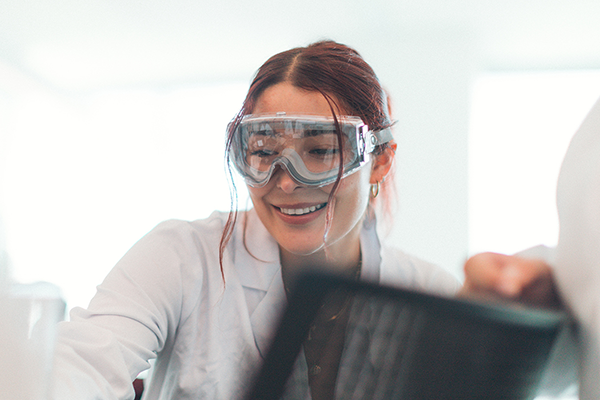
The University has announced that Agilent Technologies, a global leader in analytical and clinical laboratory technologies, has donated $1.7 million worth of analytical instrumentation for its new Science and Engineering Innovation Center (SEIC).
“Agilent’s generosity is not only an investment in our students and their success but also the greater workforce. By providing state-of-the-art equipment, students now have access to the next generation of tools for scientific discovery in the fields of chemistry, materials science, biochemistry and the life sciences,” said Dean of the College of Science & Engineering Carmen Domingo. “Agilent’s new equipment allows students to greatly expand and sharpen their skills ensuring that they are well-prepared to enter the workforce or pursue higher degrees with confidence. We are grateful for Agilent’s support in this endeavor.”
The donation will equip SEIC chemistry and biochemistry labs with Agilent technologies, enabling students to learn with world-class instrumentation and excel in our global society. In recognition of the donation, SEIC suite 201 has been named the Agilent Technologies Teaching Laboratory. The suite is equipped with the highest number of Agilent instruments in the SEIC and is primarily used for upper-division chemistry and biochemistry courses.
The new equipment is already making a tremendous impact on students like Marcello Garbo, a senior majoring in Chemistry. Garbo says before the donation, there was a limited amount of equipment that had to be shared among students and faculty. The equipment was also spread across different rooms. With more equipment that is placed in a centralized area, it speeds up the process for various tasks.
“Every five to 10 minutes, I’d have four samples that I’d have to run at the same time. And then I’d also have to go all the way down the hall in order to run them,” Garbo said while describing his experience before the new Agilent equipment.
Garbo also says the technology has been able to capture higher quality data, which has led to better scientific conclusions and more presentable information.
“Agilent is committed to fostering innovation and excellence in STEM education, and our donation to SFSU is an example of that,” said Padraig McDonnell, Agilent president and CEO. “By equipping the chemistry and biochemistry labs, we aim to empower students from all backgrounds to excel in their studies and future careers.”
The new equipment will also strengthen the way faculty teach and conduct research.
“This technology will significantly enhance faculty’s ability to deliver hands-on, real-world learning experiences that’ll prepare our students for fulfilling careers in STEM,” said Bruce Manning, chair of the SFSU Department of Chemistry and Biochemistry. “It will also open new doors for faculty research, enabling us to pursue more advanced projects and collaborations.”
The College of Science & Engineering has steadily grown, and this new 125,000-square-foot science building will help sustain this expansion and support the University’s role as a leader in fueling the workforce of the Bay Area. It will be prominently visible on 19th Avenue and is anticipated to benefit more than 7,000 College of Science & Engineering students annually.
Learn more about the Science and Engineering Innovation Center.
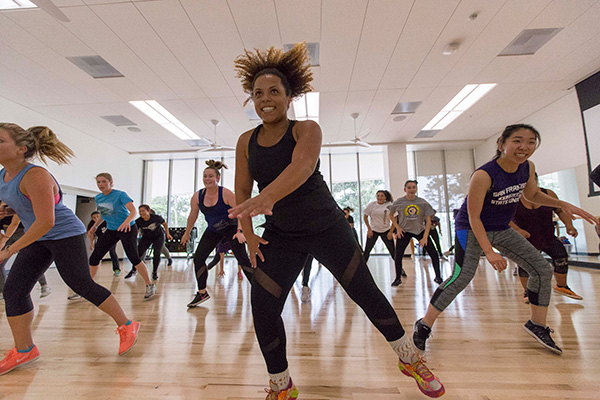
Join Campus Recreation for “Faculty and Staff Free Week” at the Mashouf Wellness Center. Secure your free trial membership for Sunday, Feb. 2 – Saturday, Feb. 8.
Please visit the Membership page.
For questions, please email Edward Viray.
Academic Technology (AT) welcomes you to spring 2025. As of Monday, Jan. 27, AT has resumed extended hours to support evening classes: Mondays – Thursdays, 8 a.m. – 8 p.m.; Fridays, 8 a.m. – to 5 p.m. Visit AT in Library 80, call (415) 405-5555 or email at@sfsu.edu.
AT has compiled technology guides to help new and returning faculty and students review its resources and recommendations for a wide range of critical technology needs. View technology resource guides by role:
Get help with AT services on ATHelp: Select a topic to view how-to guides or participate in the community forum to ask questions and share ideas. Find all of this and more at the AT Help Center.
And did you know AT makes video content? Watch AT’s YouTube channel.
New for spring 2025: the AI Literacy Education Program! To help prepare the SFSU community for an ever-changing technology environment, AT, the Center for Excellence in Teaching and Learning and Information Technology Services collaborated to develop the AI Literacy Education Program. This comprehensive training program instills essential competencies for effective and responsible engagement with generative artificial intelligence (AI), both in personal and professional contexts. Core competencies of the program include the ability to understand, use, evaluate and ethically navigate generative AI to enhance human thought and work.
Celebrate outstanding leadership and service: The Civic and Community Engagement Awards honor students, faculty, staff and community partners who strengthen the connections between SF State and our communities.
Nominations are due Friday, Feb. 14.
SFSU’s Volunteer Income Tax Assistance (VITA) program is launching for the tax season. This is a free tax-filing service that is eligible to low-income taxpayers, students, the elderly, individuals with limited English proficiency and those with disabilities.
VITA greatly appreciates the support from the Lam Family College of Business, University Corporation, United Way Bay Area and the Internal Revenue Service.
The Office of Human Resources continues its free Zoom presentations on topics to benefit employees. All employees are invited.
Presentations include:
- Identity Theft
- Nearing Retirement transitions with your 401K
- Dealing with Triggers
- The Power of Empathy
- Saving Money through Payroll deduction
- Credit Basics/Credit Cards/Credit Scores
- Co-worker Communication
- CalPERS Retirement presentation (for those considering retirement within a year)
For more information and to RSVP, please visit the events/training page.
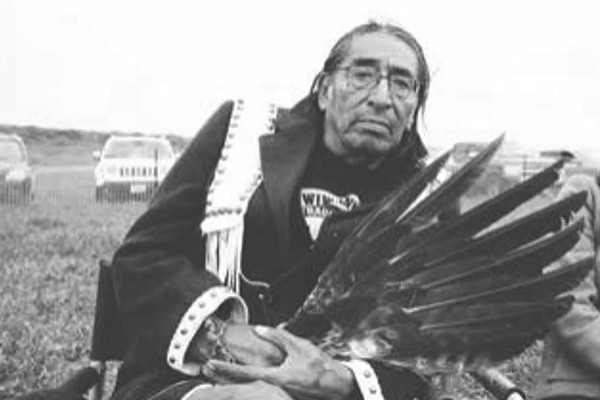
The campus community is invited to a special event featuring Lakota elder David Swallow Jr. on Wednesday, Jan. 29, noon to 2 p.m., in Knuth Hall. In a rare in-person appearance, Swallow will share a “Message for Children of Mother Earth.” The event will also feature a dance and drum opening by American Indian Studies Assistant Professor Eddie Madril to honor the New Moon. Later, Hunkpapa Lakota elder Nyla Helper will join to discuss land acknowledgment.
Swallow is a holy man and Sun Dance intercessor from Pine Ridge Indian Reservation, known for his participation in major acts of resistance and speaking about Lakota culture and prophecy.
The event is organized by the College of Liberal & Creative Arts, School of Music and the departments of American Indian Studies and Race and Resistance Studies.
The SF State food truck program returns Tuesday, Feb. 4, on the path between Cox Stadium and the Gymnasium. Regular hours will be 11 a.m. – 2 p.m. Tuesdays and Wednesdays.
Encourage students to stop by the Study Abroad Fair on Tuesday, Feb. 4, and Wednesday, Feb. 5, 11 a.m. – 2 p.m., on the Quad. Tables will represent the various countries where SFSU students can study abroad. International students from these countries and SFSU students who have studied abroad will be available to answer questions and discuss their experiences.
On an SF State Abroad program, students:
- Enjoy cheaper cost of living abroad
- Have access to their financial aid abroad
- Pay the same SFSU tuition
- Earn SFSU resident credit
To study abroad in 2025 – 2026 or summer or fall 2025, students must apply by the Saturday, Feb. 15, priority deadline.
For questions, please email studyabroad@sfsu.edu or speak with SF State Abroad representatives at the fair.
The 26th annual Muslim Student Association West conference takes place at SF State from Friday, Feb. 7, to Sunday, Feb. 9. This year's theme is “Tajdid: Discovering the Islamic Revival.” Connect with Muslim students from across the West Coast through keynote speakers, workshops and networking opportunities.
Give the gift of love in a special way by donating blood. The Mashouf Wellness Center will hold a blood drive on Thursday, Feb. 13, 10 a.m. – 3 p.m.
Do you represent an academic department and want to engage your alumni more effectively? Join the Alumni Association for a presentation and Q&A on Wednesday, Feb. 26, at 11 a.m. via Zoom to learn about SFSU affinity groups and regional chapters and how the Alumni Association can support your efforts.
Risk and Safety Services offers a series of “Ready, Set, Safety!” lunch-and-learn presentations beginning Wednesday, Feb. 26, at 11:30 a.m. in Library 286. These brown-bag talks are designed to inform the community of risk mitigation programs in place at SF State.
The Feb. 26 presentation will cover special events. Presenters will provide information on requirements for student organizations, colleges and departments when organizing an event.
SF State Spotlight
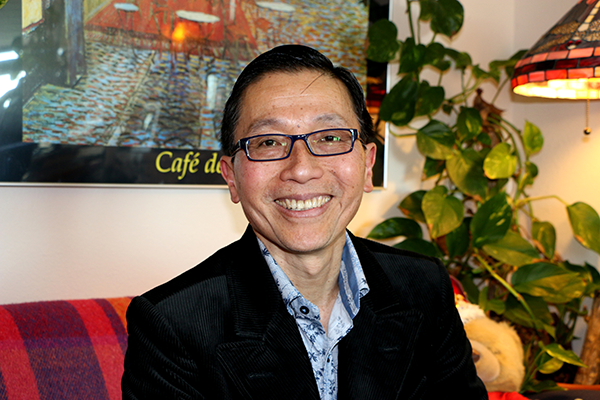
Professor of Communication Studies Gust A. Yep received the Distinguished Scholar Award, the highest lifetime recognition of scholarly achievement and excellence in the communication discipline by the National Communication Association (NCA).
The official announcement of the award at the annual conference and on the NCA website stated Yep “is recognized for their groundbreaking contributions to the field of human communication. With a career rooted in intersectionality, Dr. Yep has significantly advanced our understanding of queer intercultural communication, trans studies and the complexities of identity. Dr. Yep’s career reflects a series of firsts including being among the earliest researchers in the field (over 20 years ago) introducing ‘transing’ and ‘queerness’ as theoretical constructs. Beyond their academic contributions, Dr. Yep is known for their kindness and support, inspiring colleagues and students alike. Dr. Yep’s career reflects a commitment to ‘the complexity of human existence’ and the importance of our discipline.”
Yep was formally recognized at an award ceremony on Nov. 23 during the NCA 110th annual convention in New Orleans.
On Jan. 22, Inside Higher Ed published an op-ed piece by Will Clark, assistant professor of English Language and Literature. The op-ed covers threats to academic freedom and opportunities to protect it, referencing work at SF State and making the case for universities as sites of organizing that faculty across the nation can use.
Lorraine Dong, emerita professor of Asian American Studies, and Jonathan Lee, professor of Asian American Studies, edited a special issue of History & Perspective: The Journal of the Chinese Historical Society of America, dedicated to the history of Square and Circle Club.
Square and Circle Club was founded on June 15, 1924, in San Francisco Chinatown by seven idealistic young women who wanted to raise relief funds for flood victims in China. In 2024, it celebrated its centennial anniversary as the oldest Chinese/Asian women’s service organization in the nation. This special issue documents the club’s rich history and is written by members with help from the club’s archives.
Professor of Counseling Tiffany O’Shaughnessy was appointed to the American Psychological Association (APA) Council of Representatives for Division 35: Society for the Psychology of Women as of Jan. 1.
The Council of Representatives is the legislative body of APA, composed of representatives of divisions, representatives of state, provincial and territorial psychological associations and the board members.
She is looking forward to advocating for more just and inclusive practices in psychology in this role.
Recreation, Parks, Tourism and Holistic Health Professors Erik Peper and Richard Harvey co-authored “Monitoring and coaching breathing patterns and rate,” published in Townsend Letter on Jan. 15.